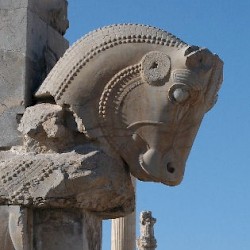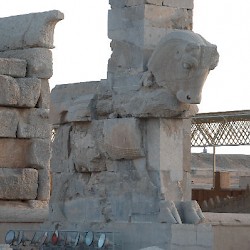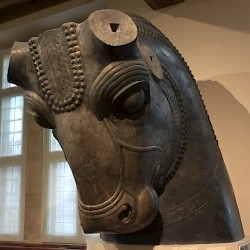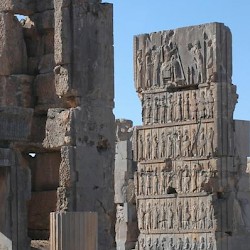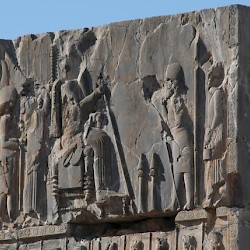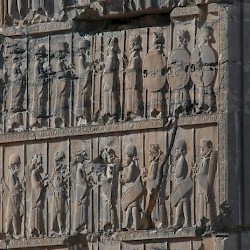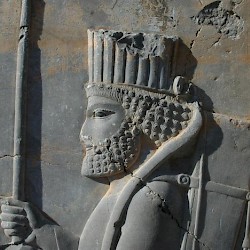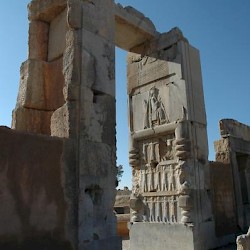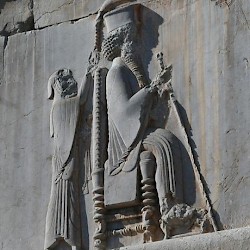Persepolis, Hall of 100 Columns
Persepolis (Old Persian Pârsa, modern Takht-e Jamshid): Greek name of one of the capitals of the ancient Achaemenid Empire, founded by king Darius the Great (r.522-486 BCE). There were several satellite sites, Naqš-e Rustam and Takht-e Rustam.
Hall of Hundred Columns

According to the inscription known as A1Pb, construction of the Hall of Hundred Columns at Persepolis (map 8) was started by the Achaemenid king Xerxes (r.486-465); the building was finished by his son and successor Artaxerxes I Makrocheir (r.465-424). This throne hall was Persepolis' second largest building, measuring 68,50 x 68,50 meters.
At an unknown moment, its function was changed and it became a store room, probably because the Treasury had become too small to contain all treasures that had been hoarded in Persepolis. A new function may have been envisioned, however, because Artaxerxes III Ochus was building a new road and a new gate to the palace, suggesting that the Hall of Hundred Columns might have been used for audiences.
The entrance was to the north, where a portico was decorated by two large bulls. The entrances themselves - two on each of the four sides of the square building - were decorated with the usual motifs: audience scenes, throne scenes, and "royal warriors" fighting against wild animals.
The Hall of Hundred Columns has exactly the same dimensions as the Odeon of Pericles in Athens. The probably explanation is that the Hall replaced the royal pavillion, a large tent, which was after the battle of Plataea (479 BCE) seized by the Athenians, who used it as an auditory. Eventually, the pavillion was on both places replaced by a more permanent structure made of stone.
